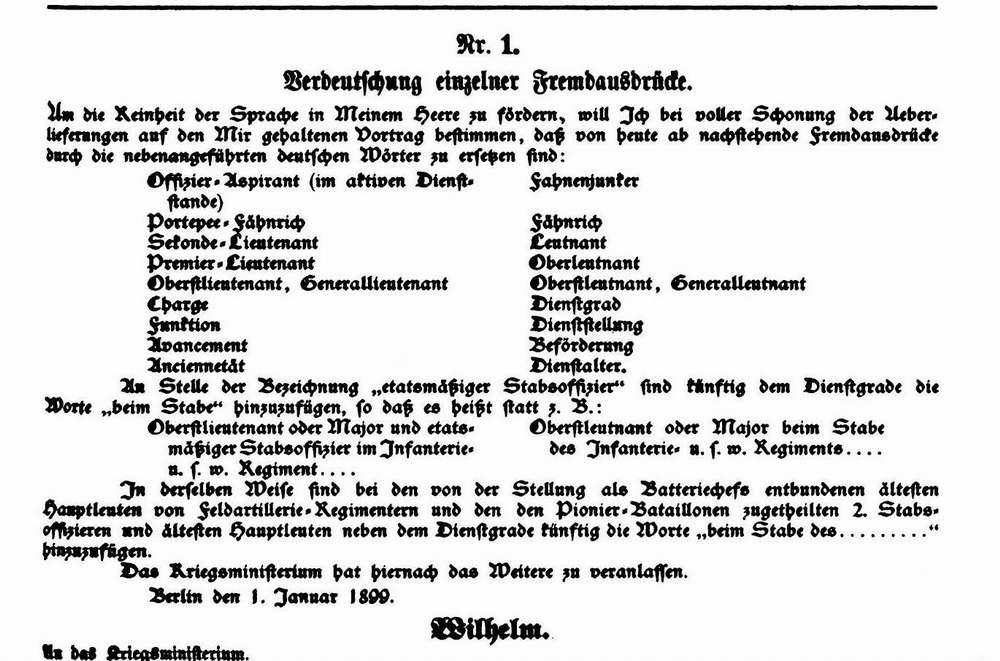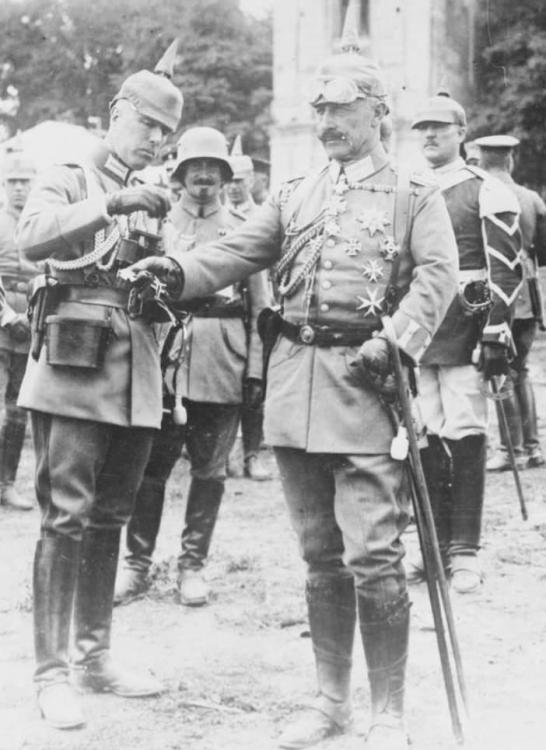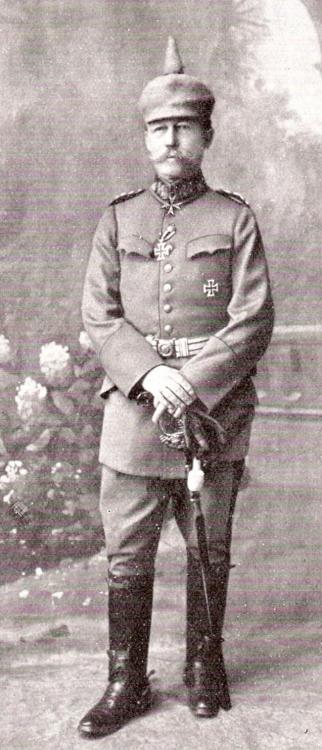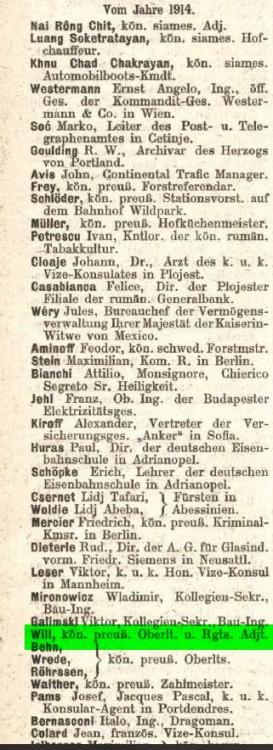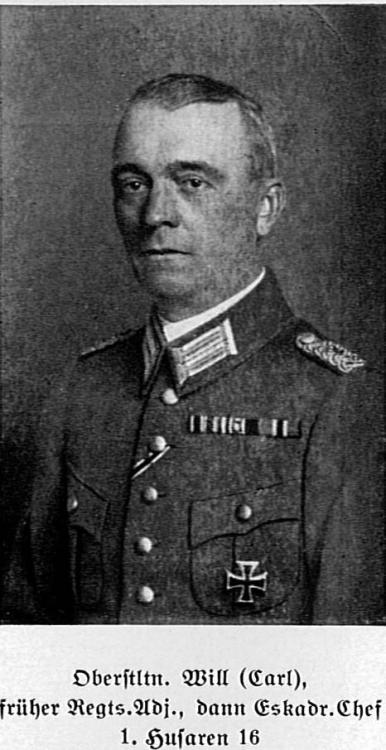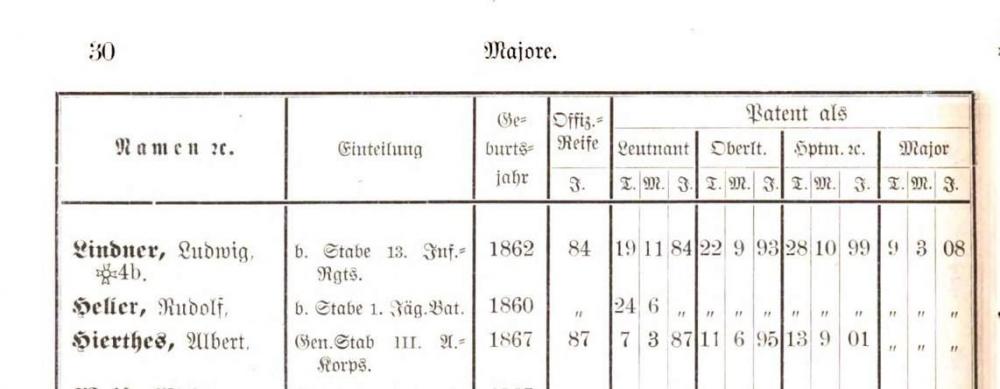-
Posts
2,234 -
Joined
-
Last visited
-
Days Won
55
Content Type
Profiles
Forums
Blogs
Gallery
Events
Store
Everything posted by Glenn J
-
Hello chaps, I would be most grateful for a serviceable translation regarding the Kepi of French general officers. the golden braid which edges the upper edge of the cap band is referred to in the 1935 dress regulations as a “une baguette droite de 5mm”. A “straight rod” or “wand” does not seem particularly helpful. I was thinking perhaps along the lines of a “beaded trim” or such like. Perhaps one of our French speaking gentlemen can please assist. many thanks Glenn
-
Jon, the war pretty much phased out the Epauletten. As they were only worn on the peacetime parade uniforms, they were no longer used. When the 1915 field grey parade uniform was introduced, these were to fitted with shoulder boards. Paragraph 22 of the introductory order (A.K.O. of 21 September 1915) abolished the Epauletten. Regards Glenn
-
Hi Jon, a series of changes to titles, including the one you mentioned occurred with effect order of 1 January 1899 - "in order to promote the purity of the language in my army etc....." I am unsure as what you mean by epaulettes. Epaulettes (i.e. the crescent shaped parade dress badges of rank were not worn during the war. If you are referring to the shoulder boards, do you mean those worn by captains and lieutenants of the type introduced in 1888 to replace the previously worn "Feldachselstücke" of flat silver lace? Shoulder boards for general and field officers were considerably reduced in size per order 20 December 1903 from the pattern hitherto worn. Regards Glenn
-
Hi Chris, as Bayern points out, the Kaiser also wore a similar rig to that worn by Flügeladjutant Major Edgar von Hirschfeld in your photo. The two front straps were worn vertically and crossed over in the rear. Here is another picture of Major von Hirschfeld and his Majesty both wearing the leather belt equipment. Regards Glenn
-
Hi David, David, from left to right: Oberst Wilhelm Hans von Frankenberg und Ludwigsdorf, Oberstallmeister. Hauptmann Hans Albert Zeyß, Auto Offizier, Marstall Major Detlef Graf von Moltke, Flügeladjutant General der Kavallerie Frhr. von Richthofen Hauptmann Leopold Frhr. von Münchhausen, Flügeladjutant, 2. Kommandant GrHQ Generalleutnant Oskar von Chelius, General à la suite Wirklicher Geheimer Rat Rudolf von Valentini, Chef, Zivilkabinett S.M. Generaloberst Hans von Plessen, Generaladjutant Generalleutnant Hans Albrecht von Gontard, Generaladjutant Generaloberst Moritz Frhr. von Lyncker, Generaladjutant Oberst Otto Karl von Estorff, Flügeladjutant Oberstleutnant Hans Heinrich XV, Fürst von Pless Generaloberst Friedrich von Scholl, Generaladjutant Major Edgar von Hirschfeld, Flügeladjutant Wirklicher Geheimer Rat, Oberleutnant d.R. Carl Georg von Treutler, Foreign office Admiral Georg von Müller, chief of naval cabinet ? Balzer Generalarzt Dr. Otto von Niedner Regards Glenn
-
James, this is an improvement on the one posted above, which I believe I scanned from said book some years ago. The images in the link and the photo with Heeringen and Zwehl above shows Rudolf von Borries. I have to admit, I have some issues with the portrait captioned as showing Baron Diepenrock as a "cadet in 1872." In the first instance, it shows a subaltern officer of one of the Foot Guards regiments. Otto Diepenbrock was commissioned into the 4. Garde-Grenadier-Regiment in November 1879 which wore different cuffs and collar insignia. I am wondering, if he is perhaps Friedrich Freiherr von Diepenbroick-Grüter, born 1869 who was serving in the 2. Garde-Regiment zu Fuß. Regards Glenn
-

Generaladjutant Weiland
Glenn J replied to jonv's topic in Deutsche Kaiserreich: Man spricht Denglish
Jon, I tend to translate it as "formerly Generaladjutant to His Majesty". The impression I have, is that listing was just a courtesy to honour the former holders of these prestigious posts. Regards Glenn -
I don't think it can be Major Slevogt. He already had the BMV4b as a Major in 14. Infanterie-Regiment before his tenure as commander of 2. Jäger-Bataillon. I have spent the last two hours combing through the Bavarian Militär-Handbuch, Personal-Nachrichten and the the Ranglisten der activen Offiziere. I have found just one field officer who ONLY had the Jubilee medal and long service decoration whilst serving in that rank in a Jäger-Bataillon in 1908. The Bavarian Military Handbook was not published every year and he was not listed in 1907 and 1909 with a Jäger-Bataillon. But Major Rudolf Heller was the Major on the staff of 1. JB in 1908 having previously been an Hauptmann in 20. Infanterie-Regiment. In 1909 he is a Major in 17. Infanterie-Regiment still with just a Jubilee medal and long service decoration. This from the Ranglisten der activen Offiziere 1908. Regards Glenn
-
Hi Laurentius, he received the EKII on 8 October 1817 vice the deceased Lieutenant Blumenthal. Regards Glenn
-
As far as I can ascertain, these are the guys who are a possibility in 1875. I would probably exclude the Landgendarmerie officer. Regards Glenn Ballhorn Land-Gendarmerie Maj. RAO4X, EK2 70, DA, MMV2 Becher IR 24 Hptm. RAO4X, EK2 70, MMV2 Gustorf IR 25 Hptm. RAO4X, EK2 70, MMV2 Klösterlein von IR 24 Hptm. RAO4X, EK2 70, MMV2 Merckel von General-Stab der Armee Maj. RAO4X, EK2 70, MMV2 Platen von IR 117 Hptm. RAO4X, EK2 70, MMV2 Runckel von Landwehr-Regiment Nr. 48 Obst. z.D. RAO4X, EK2 70, DA, MMV2 Voigts-König von GR 110 Maj. RAO4X, EK2 70, DA, MMV2 Wrochem von FR 90 Hptm. RAO4X, EK2 70, MMV2 And here are the possibilities from 1871: It is of course possible that the General staff officers are not originally infantry officers: Ballhorn Land-Gendarmerie Maj. RAO4X, EK2 70, MMV2 Bentivegni von FR 90 Maj. RAO4X, EK2 70, DA, MMV2 Bülow von Großer General-Stab Hptm. RAO4X, EK2 70, MMV2 Gaza von GR 12 Maj. RAO4X, EK2 70, MMV2 Gustorff FR 35 Hptm. RAO4X, EK2 70, MMV2 Heynitz von IR 24 Hptm. RAO4X, EK2 70, MMV2 Holtzendorff von IR 32 Maj. RAO4X, EK2 70, DA, MMV2 Klösterlein von IR 24 Hptm. RAO4X, EK2 70, MMV2 Meerscheidt-Hüllessem Frhr. von IR 24 Maj. RAO4X, EK2 70, MMV2 Merckel von Großer General-Stab Hptm. RAO4X, EK2 70, MMV2 Runckel von IR 78 Obstlt. RAO4X, EK2 70, DA, MMV2 Schell von Großer General-Stab Hptm. RAO4X, EK2 70, MMV2 Schultz von FR 90 Hptm. RAO4X, EK2 70, MMV2 Seyfried 3. GRzF Hptm. RAO4X, EK2 70, MMV2 Trapp-Ehrenschild von IR 76 Hptm. RAO4X, EK2 70, MMV2 Voigts-König von IR 24 Hptm. RAO4X, EK2 70, MMV2
-
Claudio, I am not going to comment on the entire Wikipedia article but it is in error regarding the dates of introduction of the rank. In the case of the Landwehr it was introduced per cabinet order of 1 February 1843 (not 1846). And in fact it was in 1846 that the rank was introduced for the active army (not 1873).The cabinet order of 6 January 1846 authorized the promotion of the senior Sergeant in a company with a minimum of 15 years service to the rank of Vice-Feldwebel/Wachtmeister as long has he possessed the necessary ability to deputize for the Feldwebel/Wachtmeister. Regards Glenn
-
Chaps, unfortunately, the basic problem is that his orders are not particularly unusual. This is exacerbated by the fact that he is wearing a Prussian infantry uniform whilst photographed in a Mecklenburg-Schwerin garrison town. He is clearly not wearing the uniform of either GR 89 or FR 90. Added to this, we are at this time unclear of the exact time frame the photograph was taken; it could be anytime between 1871 and probably the mid eighties. If we assume it is in fact 1880, there are nine infantry officers with the combination of an RAO4X, EK2 13 and an MMV2. Of these only two are listed with the Dienstauszeichnung: Oberst von Gaza of IR 67 Oberst z.D. von Runckel of Landwehr-Regiment Nr. 48. The other seven are: Major Gustorf of FR 34 Hauptmann Frhr. von Mirbach of the Garde-Füsilier-Regiment (It is definitely not him) Hauptmann von PLaten of IR 64 Hauptmann von Schierstedt of GR 89 Hauptmann Struensee of IR 24 Hauptmann von Wagenhoff of FR 90 Hauptmann von Wrochem of FR 90 Hopefully the rear of the photograph may provide some additional clues Regards Glenn
-
Enzo, is that not the officer's 25 year service decoration? Regards Glenn
-
Arho, do not be disheartened. It is a wonderful photograph and possibly, given time will be identified. The problem with Herr Kühne is that he is listed in the 1830 Rangliste with just an EK2. Presumably his Austrian and Russian awards date from the Befreiungskriege and would therefore be listed if that were he? Regards Glenn



